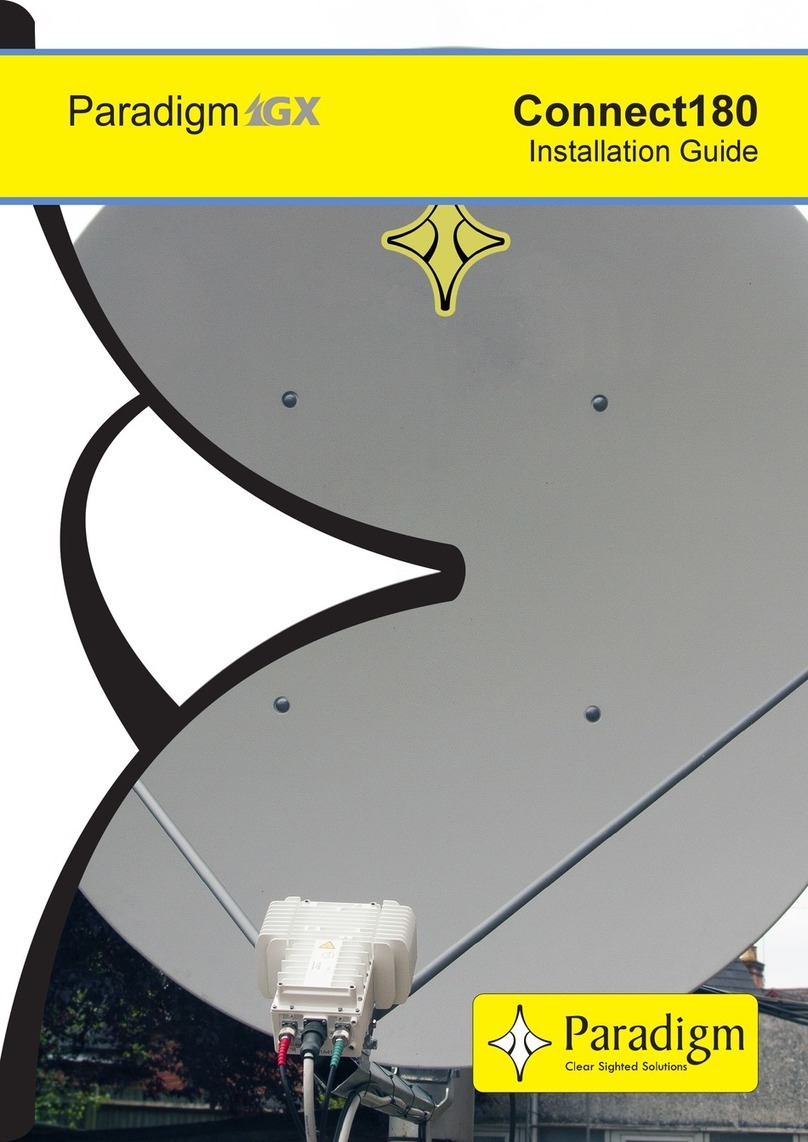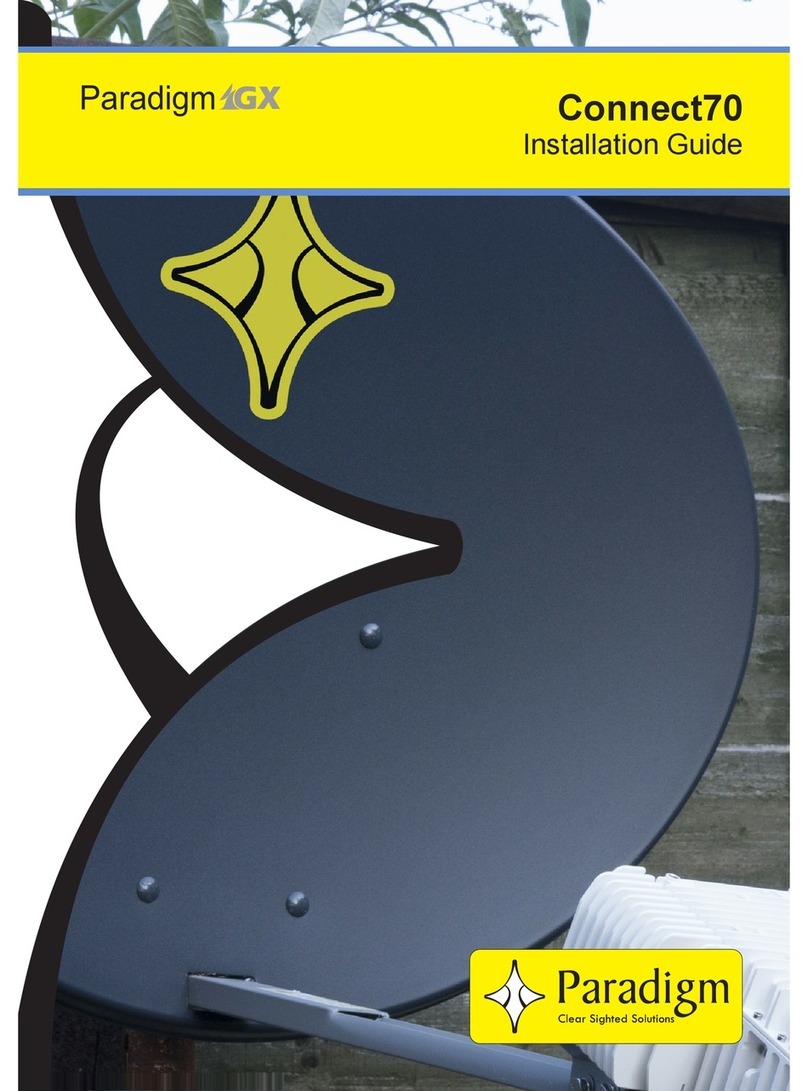
- 3 -
Installation Guide
Connect100
Contents Safe Use ............................................................................................................2
Legal ..................................................................................................................2
Contents............................................................................................................3
Site Survey for Antenna Installation...............................................................4
Installation Process..........................................................................................4
System Packaging Content .............................................................................5
Installation Tools ..............................................................................................5
Assembly Process............................................................................................6
Skew plate and antenna rear bracket assembly ............................................6
Attach the Az/El mount...................................................................................7
Attach Boom to Az/El mount .........................................................................8
Mounting the Transceiver...............................................................................9
Attach Transceiver and Mount ......................................................................9
Attach Antenna dish to Az/El mount .............................................................10
Antenna Adjustment ......................................................................................11
Skew Adjustment..........................................................................................11
Elevation Adjustment....................................................................................11
Azimuth Adjustment .....................................................................................12
Antenna Grounding........................................................................................13
RF Circuit Setup .............................................................................................14
Transceiver Port Identication......................................................................15
Transceiver Control LEDs ............................................................................15
Skew Calculation Chart..................................................................................16
Elevation Calculation Chart...........................................................................17
Azimuth Calculation Chart.............................................................................18
Pointing with Skew.........................................................................................19
Periodic Maintenance.....................................................................................19





























